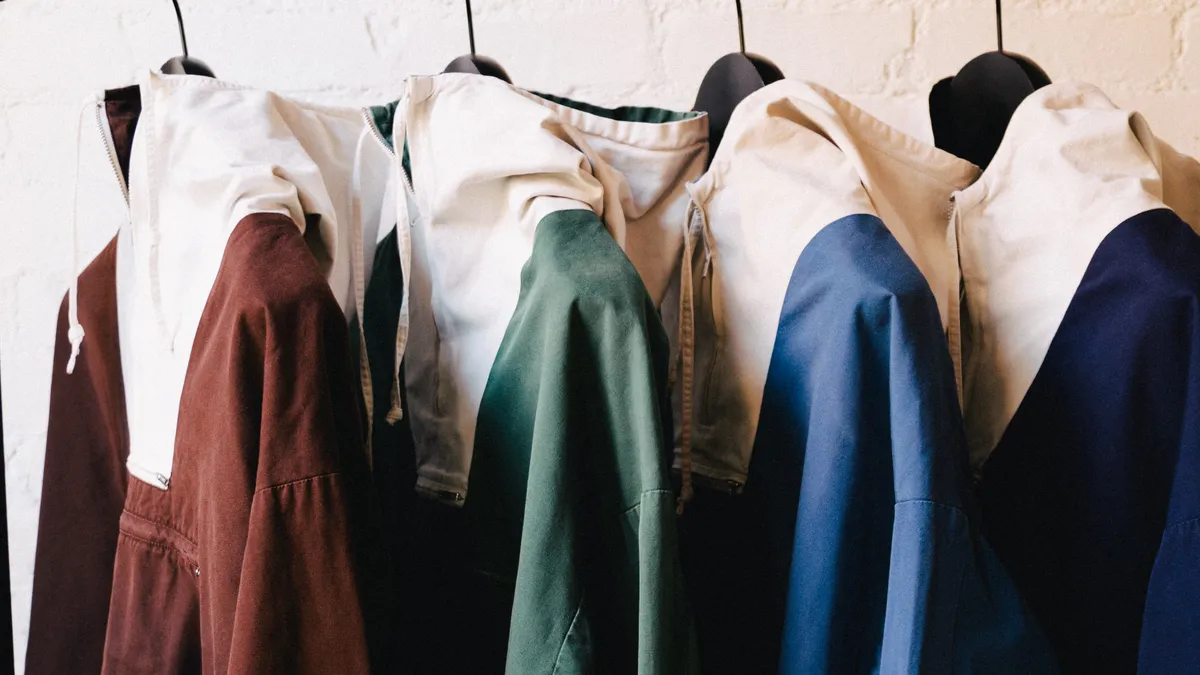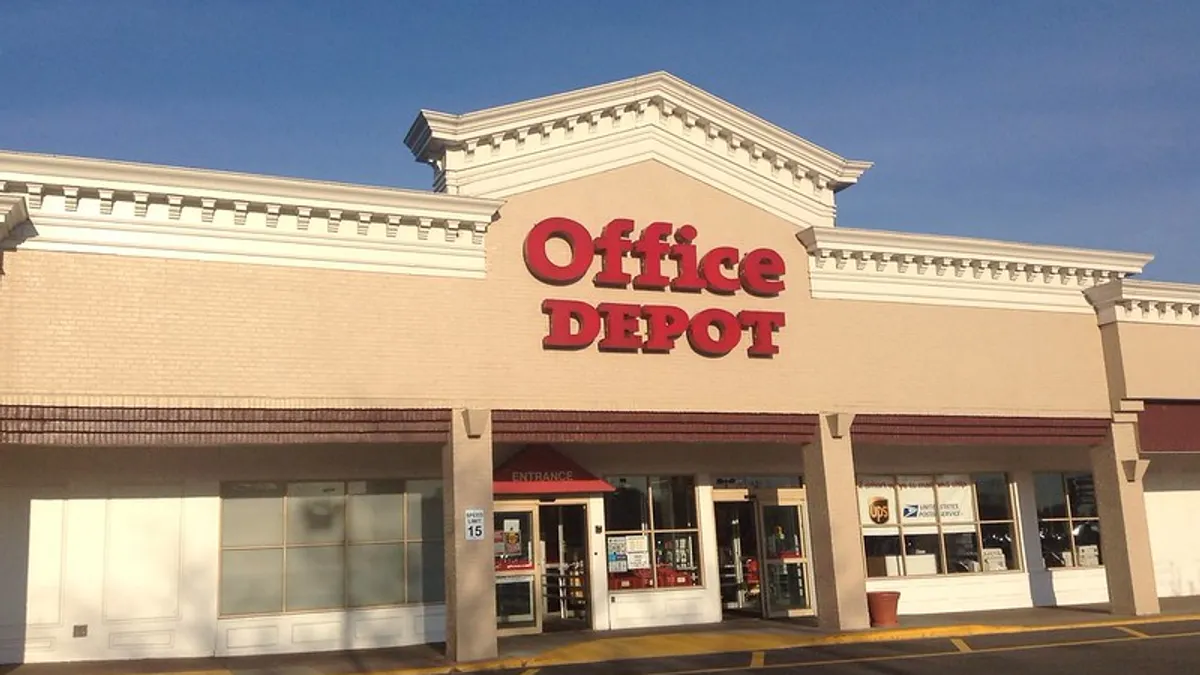These days it’s difficult to find a retailer or brand that hasn’t at least experimented with resale. Rather than figure out how to do it themselves, most have turned to third-party platforms that specialize in secondhand e-commerce, leaving the success or failure of their attempt in other hands.
As it turns out, selling used goods online is so inefficient that it’s difficult to do so profitably. Despite the robustness of resale’s growth, it’s a niche best left, for the most part, to brick-and-mortar stores, experts say.
The resale platforms jockeying to work with brands are gaining steam as sales of preowned goods continue to grow. ThredUp, which runs a used-apparel site of its own, is rapidly building its resale-as-a-service platform, and Wells Fargo analysts see it as potentially more lucrative than its primary business. The company ended the year with more than 40 clients, which include H&M, J. Crew, Francesca’s, Kate Spade, American Eagle and Target.
The roster at Trove, which runs a rival recommerce operating platform, includes Canada Goose, Carhartt, On, Lululemon, Patagonia, REI, Levi’s, Arc’teryx and Allbirds. Another resale vendor, Recurate, works with Michael Kors, 7 For All Mankind, Clare V., Juicy Couture, Apparis, Peak Design and Moosejaw, among others. The apparel segment dominates resale, with outdoor brands in particular leaning into renting or selling used gear, according to Trove’s recently released resale brand index.
“What’s happened is that brands and retailers are really acknowledging that the customer is engaging in the active purchase of secondhand product."

Anthony Marino
President, ThredUp
The rush is understandable, given the exploding market. In their latest annual forecast, ThredUp and GlobalData researchers found that resale is on pace to reach $350 billion globally and $70 billion in the U.S. by 2027. That would be nearly double last year’s totals, which were $177 billion globally and $39 billion in the U.S., per the report.
“What's happened is that brands and retailers are really acknowledging that the customer is engaging in the active purchase of secondhand product,” ThredUp President Anthony Marino said by phone. “And so they're starting to ask themselves, ‘What should our resale strategy be? Because our customer is participating in this market.”
Consumers are attracted to secondhand goods for their value, especially at a time of high prices, for their perceived sustainability benefits and the joy of discovery that comes with a unique find, according to research from ThredUp and WD Partners. The benefits for retailers are multifold as well, including driving traffic to physical stores, with consumers eager to have the option at retailers of every size, model and category, WD Partners found.
The catch — is it actually profitable?
But there are downsides. The latest estimates reflect somewhat lower and slower growth than what ThredUp forecast last year. More dire, however, is elusive profitability.
Despite the healthy and growing demand for used goods — WD Partners found that 92% of U.S. consumers shop, buy, sell or trade secondhand items at least once a year — e-commerce players in the space have struggled to get or stay in the black. In ThredUp’s most recent quarter, gross profit fell 7% to $45 million, gross margin contracted to 63.1% from 66.1% a year ago, and net loss widened 8.9% to $19.5 million.
Luxury resale e-retailer The RealReal, which may be at risk of bankruptcy, recently narrowed its chronic losses, but only after drastic measures like layoffs, store closures, the abrupt departure of its founder and major shifts to its strategy. After a couple of years suffering growing losses as a public company, online secondhand marketplace Poshmark last year was acquired by South Korean internet giant Naver.
It’s not clear whether Trove and Recurate, both backed by venture capital, are profitable on a net income basis. In an emailed statement, Trove founder and Executive Chairman Andy Ruben said that the company is unable to comment on its own profitability or that of partner resale programs. Recurate declined to say whether it’s profitable as a company. But a spokesperson said by email that, thanks to resale’s contribution to a brand’s marketing efforts, including a customer’s lifetime value, the ability to upsell and attract shoppers new to the brand, its partners see a “2.5x return on investment for their resale programs.”
Some online resale companies are in the black, or close. After posting a Q4 after-tax loss of $176.7 million, upscale resale marketplace Farfetch’s after-tax profit last year shrank 77%, but reached $344.9 million. ThredUp is on its way to achieve profitability this year an on adjusted EBITDA basis, according to Marino.
“We’ve been very consistent in what we’ve said to investors and the Street — that we would achieve profitability in the second half of the year,” he said by phone, noting that the company’s Q4 adjusted EBITDA was up 800 basis points compared to Q3. “We believe that demonstrating that kind of solid performance and aiming for sequential improvement shows that we're successfully navigating what is a tough macro environment but also that we're providing a great value proposition for our buyers and our sellers.”
"There’s a lot of time it takes to get that item in the door, get it catalogued, determine whether we can clean and repair it. Try to clean it and repair it. Then write a product description, photograph it, get it uploaded and online."

Scott Kuhlman
Chief Executive Officer, ReCircled
About three years ago, ReCircled began much like the others as a resale platform providing technology and infrastructure to brands. But the company has since pivoted to focus on more lucrative and sustainable ways of reusing preowned clothing, including repurposing it into textiles for apparel manufacturers or composites used in building materials or home goods. Resale is an important aspect of circularity in fashion, and remains a small percentage of ReCircled’s business, according to ReCircled CEO Scott Kuhlman. But upcycling and reuse of garments and footwear on an industrial scale is not only more profitable, but also ensures that more items are kept out of landfills, said Kuhlman, who started the company after years in the textile business.
“We're starting with the end in mind, which is no landfill,” he said by video call. “What we've gotten to, after millions of items now in the last couple of years, is that this is about time management. And particularly around resale, there's a lot of time it takes to get that item in the door, get it catalogued, determine whether we can clean and repair it. Try to clean it and repair it. Then write a product description, photograph it, get it uploaded and online. It's unbelievable.”
Resale works best in local, physical stores
Companies like ThredUp and Trove, and the brands partnering with them, can’t escape the complexities of secondhand retail or the reality that it is only consistently profitable in brick-and-mortar stores, according to Lee Peterson, executive vice president of thought leadership and marketing at WD Partners and a longtime retail veteran.
Early in the 20th century, automobile manufacturing legend Henry Ford ushered in an era of high productivity and efficiency. His ideas, particularly around a speedy, cost-efficient flow of goods throughout the supply chain, have permeated most business sectors, including retail.
While the pandemic exposed their vulnerabilities in this area, retailers in every category continue to hone their ability to get the optimal number of SKUs into stores and warehouses. Resale — where items arrive one at time, each in a solitary color and only one size, in whatever condition — upends that, Peterson said by phone. He describes how things worked when he was a merchant for The Limited years ago.
“We wanted to buy a certain vest, and we sourced it to two or three factories in the Pacific Rim at a certain price. They delivered 100,000 of them, we put them in 600 stores,” he said. “That was a fairly simple process, to get those into every single store, and we made zillions of dollars on those. In resale, I'm gonna take one item — one item — in one size, and I'm going to inspect it, photoshoot it, I'm going to post it online. It's a lot of hard work. And it's reverse thinking for almost all retailers today.”
The process works at a brick-and-mortar location, however, because store staff are trained to take in items suitable for sale to their local customers, said Peterson, who also once ran a record store that sold both new and used. To smooth the difficulties of acquiring secondhand inventory, stores can be flexible about what they take in and how much they pay for it, he said. And it works efficiently, Kuhlman said.
“Localized resale works — it works environmentally and financially. It works very, very well, so trying to disrupt that is not needed, quite frankly,” Kuhlman said. “There's nothing broken with that system. So let's look at what we do need to put effort into.”
E-commerce in resale is profitable at certain price points, according to Brett Heffes, CEO of Winmark Corp., a franchise company whose banners include secondhand retailers Play It Again Sports, Plato’s Closet, Music Go Round, Style Encore and Once Upon a Child. The company is consistently in the black, with net income last year of $39.4 million, about flat year over year.
"Customers come to us because of convenience, sustainability and the treasure hunt. That’s why the storefront is really a driver."

Brett Heffes
Winmark CEO
“The stores are locally owned buying centers, and their primary role is to market and advertise — ‘Bring us your gently used items and we'll pay you cash on the spot,’” he said by phone. “And customers come to us because of convenience, sustainability and the treasure hunt. That's why the storefront is really a driver. [With e-commerce] if the average order can be high enough, if it can be done profitably for the franchisees, then there's a nice multi-channel aspect to it. It's just that, for our focus on value, it hasn't been a big component of our business, although it's there and it's growing.”
Of the company’s retailers, musical instrument shop Music Go Around, apparel shop Style Encore and sports gear shop Play It Again Sports offer online sales. “The average order sizes are high enough where it's profitable to do so,” Heffes said. “In our musical instrument brand, our average order online is over $250. So it makes sense to go through all the steps and all the things that you have to do to make money.”
The risk of outsourcing
If selling used items snarls a retailer’s operations or risks its bottom line, that in turn could undermine the long-term success of resale and the benefits it brings to retailers and their customers, or the planet, Peterson warns.
“Obviously resale is very trendy, but it's also a conundrum,” he said. “The companies that have acted like Henry Ford the past 40 years are not going to figure it out. So they're going to outsource it. What scares me about the online thing, and these guys outsourcing it is, it’s a lot of hard work, they're going to lose money and they’re going to give up.”
Instead, retailers and brands need to dig in to figure out how to make this burgeoning market work, most likely in stores or some combination of on- and offline, according to Peterson.
“Obviously resale is very trendy, but it's also a conundrum. The companies that have acted like Henry Ford the past 40 years are not going to figure it out. So they're going to outsource it."

Lee Peterson
Executive Vice President of thought leadership and marketing, WD Partners
J. Crew is one brand taking different tacks. The retailer has partnered with ThredUp to take in and sell used items online, but also has a team that handpicks and curates items to sell in select stores for its J. Crew Vintage program. The retailer recently collected vintage J. Crew rollneck sweaters and anoraks, which both quickly sold out, and has now amassed a collection of its spring barn jacket.
“All jackets are vintage and sourced/handpicked by J.Crew’s designers,” a spokesperson said by email. “ThredUp is not involved in any of the sales of these styles.”
But the silos created by brands’ approaches can create friction. Unlike the ease of shopping for all items in a store, for example, just 13% of brands integrate online searches for new and used items, 25% allow customers to combine purchases of new and pre-owned items, and 19% enable mobile shoppers to view pre-owned items they've added to their cart from the desktop, according to Trove’s report.
Success requires the kind of dedication seen at Ikea, said Peterson, who has worked with the company on presentations about resale’s challenges and benefits. After piloting resale at dozens of U.S. stores in 2021, the furniture retailer recently launched “As-is,” where customers can reserve secondhand items to be picked up in store.
“It has to be part of your culture,” he said. “You have to be like REI when they closed on Black Friday. You have to show everybody, ‘We want to go outside. We're about the outdoors. So we're closed on that day.’ I think Ikea is the same way. They're just going to do it. They're into the circular economy, I mean, beyond into it. They won’t shut up about it. So they’re going to figure it out.”























